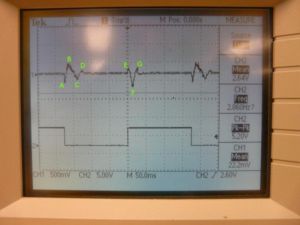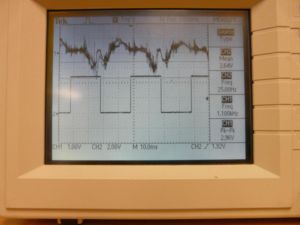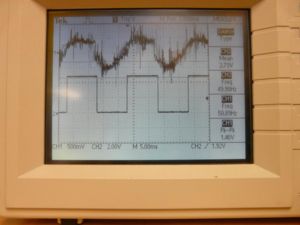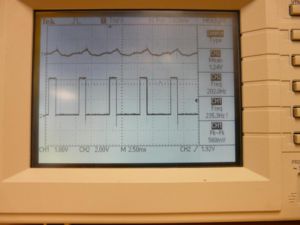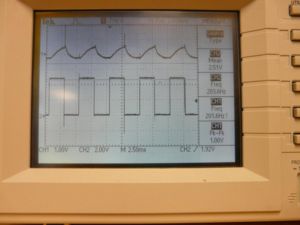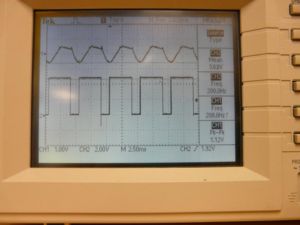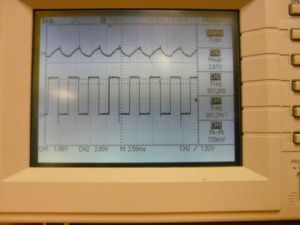Characterizing the response of a solenoid
Original Assignment
Your job is to characterize the response of a solenoid to on-off pulsed forcing. The solenoid should be equipped with a return spring so that the solenoid returns to a home position when the coil is de-energized.
You should provide the user with the ability to control three parameters of the on-off pulsed forcing: the frequency of the on-off pulsed forcing, the duty cycle, and the amplitude (the voltage or current applied to the coil when it is energized). You will mount an accelerometer on the shaft of the solenoid and use an oscilloscope to simultaneously look at the control voltage to the solenoid and the acceleration of the solenoid. Try frequencies from 10 Hz to hundreds of Hz. For what frequencies, duty cycles, and amplitudes does the solenoid shaft hit stops, and for what values do you get approximate square wave acceleration profiles? Summarize your results in text and post clear images of the oscilloscope for a few representative choices.
Note: your PIC may not be involved in this assignment at all. You could use a function generator to generate the frequency and duty cycle you want, and use the amplitude to (perhaps) control a transistor operating in the linear regime to deliver different amounts of current to the solenoid. It may make sense to always energize the coil a little bit, even in the "off" state, so that the return spring is always in a bit of tension.
Overview
Circuit
Accelerometer: [[1]]
Oscilloscope Graphs
The upper trace is the accelerometer, the lower trace is the voltage across the solenoid. On the accelerometer trace 0g corresponds with 2.5V, +18g is 0V and -18g is 5V.
These scope traces show the erratic vibrations at low frequencies. At these frequencies the solenoid plunger hits both end stops. The erratic acceleration is due to the spring becoming completely unloaded as the plunger exits the solenoid and the subsequent recontact between the plunger and spring.
These scope traces show the effects of varying the duty cycle with constant amplitude (24V) and frequency (200Hz). At this higher frequency the plunger retains contact with the return spring and does not hit either end stop. Note that at 75% duty cycle the acceleration profile approaches a square wave.
These scope traces show the effects of varying driving amplitude at constant frequency (300Hz) and duty cycle (50%)

